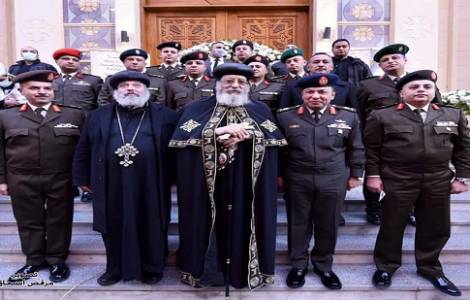Cairo – In the intense urban development program launched in Egypt, each new urban district built in compliance with the guidelines established by the civil authorities will also have its own church, in accordance with the regulatory plan. This was confirmed by the Coptic Orthodox Patriarch Tawadros II, who, on Saturday, February 5, presided the celebrations for the inauguration of the new church built in El Salam City, an urban industrial and residential district that was built in recent years in the vast area of Cairo.
The declared intent of the presidential provisions – Egyptian political analysts report – is to guarantee to all citizens, Muslims and Christians, the opportunity to take part in celebrations, rites and activities of their own faith community.
The new church, dedicated to the Holy Virgin Mary of Egypt, will become a central place for the community life of Christian families residing in the districts called Ahalina 1, Ahalina 2, Ahalina 3 and Qubaa. During the inauguration ceremony, Patriarch Tawadros consecrated three altars of the church. Then, in a passage from his sermon, Pope Tawadros (photo) thanked President Abdel Fattah al Sisi, the police forces and all the institutions that helped build the new place of worship. The construction of the church, erected on an area of more than a thousand square meters, had begun in 2019. “It is nice” the Patriarch remarked in his sermon “that the political leadership is committed to guaranteeing the presence of at least one mosque and a church in every new urban residential reality”.
The guidelines now promoted by the Egyptian political authorities gain importance also in light of the many problems and conflicts recorded in the past regarding the construction of new churches.
Until 2016, the construction of new Christian places of worship was still conditioned and effectively hindered by the so-called “10 rules” added in 1934 to the Ottoman legislation by the Ministry of the Interior, which prohibited, among other things, the construction of new churches near schools, canals, government buildings, railways and residential areas.
In many cases, the strict application of those rules had prevented the construction of churches in cities and towns inhabited by Christians, especially in rural areas of Upper Egypt.
In the decades following the imposition of the “ten rules”, many churches and chapels were built across the Egyptian territory spontaneously, without all the necessary authorizations. Even today these buildings, built by local Christian communities without legal permits, continue from time to time to be used as a pretext by mob groups to foment sectarian violence.
The new law on places of worship, ratified by the Egyptian Parliament in August 2016, also made it possible to start a methodical process of “legalization” of Christian places of worship built in the past without the required permits. The ad hoc government committee met 20 times to give its authorization on each occasion for the legal regularization of churches and buildings belonging to the Church, which up to now have been considered in whole or in part illegal from a legal point of view.
So far, as reported by Fides (see Fides, 24/8/2021), this increases the number of churches and auxiliary service buildings that have been approved since the beginning of the “legalization” of Christian places of worship, which were built in the past without the necessary permits, to 1958.
Agenzia Fides






